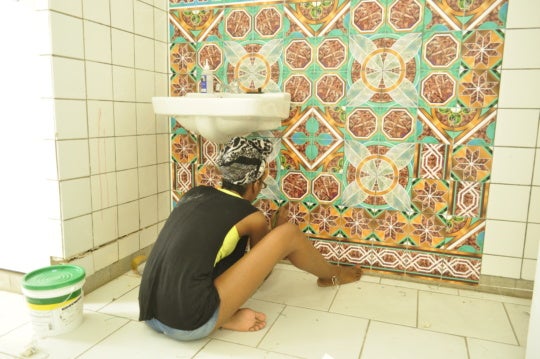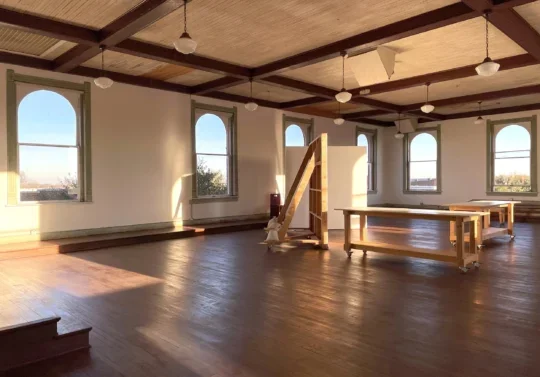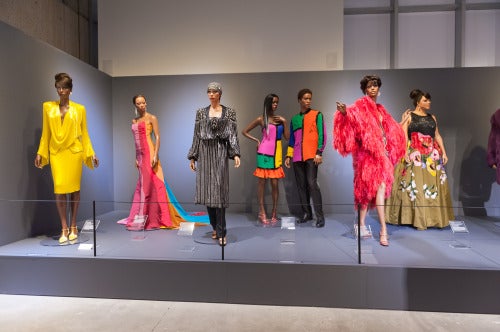
at the Museum of Design Atlanta.
“Inspiring Beauty: 50 Years of Ebony Fashion Fair,” on view at the Museum of Design Atlanta through January 4, is filled with couture outfits that once graced the models of the Ebony Fashion Fair. The show is part nod to the exquisite designs of decades past and part commemoration of philanthropist Eunice W. Johnson. She established the show in 1958 as a charity event for Johnson Publishing Company, which her husband John H. Johnson founded and served as publisher. The company publishes Ebony and Jet magazines.
The exhibition features 36 outfits, whittled down from the 67 pieces that were displayed earlier this year at the Chicago History Museum, which were in turn selected from the more than 7,000 pieces that the show accumulated over five decades, until its last days in 2009. Organized by Joy Bivens, a curator at the Chicago museum, and Virginia Heaven, a professor of fashion studies at Columbia College Chicago, it will travel to other U.S. venues through 2016.

For each year of the Fashion Fair, about a dozen models traveled to 170 cities over nine months for the fantastical show of garments selected by Eunice, says Linda Johnson Rice, chairman of Johnson Publishing Company and daughter of John and Eunice. Over the Ebony Fashion Fair’s five decades, it raised $55 million dollars and spawned a cosmetic company, Fashion Fair Cosmetics. The money raised from the shows went to scholarships and to support other community-based organizations. “There is a child that got a scholarship to attend school because of Ebony Fashion Fair,” Rice said, just before the show’s opening at MODA.
Rice remembers going to the fair at the age of seven with her mother, but for many African-Americans—Ebony and Jet’s target demographic—Fashion Fair was the first time they had seen runway fashion, especially on models who looked like them. “My mother was a real visionary,” Rice said.
“This was her own civil rights movement,” said MODA’s executive director Laura Flusche of Eunice. The show began traveling throughout America before the Civil Rights Act.
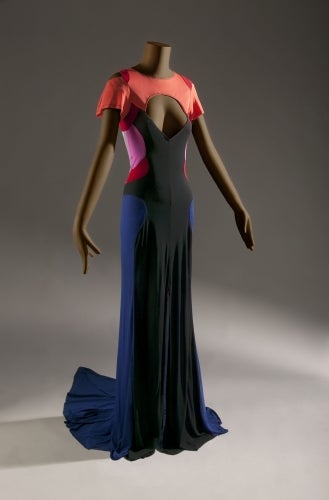
At MODA, the couture pieces are shown on mannequins—mostly female, some male—with a variety of skin complexions, hairstyles, and body types. Rice said that this was intentional. She wanted the mannequins to resemble the models that walked the runways, including their darker skin.
Keisha Noel, an Atlanta-based jewelry designer, remembers working as a ticket taker at the fashion show as a teen in Chicago. “It was the one time of year I felt empowered as a person of color and I felt that fashion was for me.” There is one piece that she remembers vividly. It was a red sequin and feather Bob Mackie dress that sailed down the runway atop a towering black model. “I will never forget how beautiful that dress is.”
These designs still prove unforgettable. One of the first looks you see when you walk into the exhibition is a yellow gown with a ruched bodice and puffed sleeves by Emanuel Ungaro. Next to it stands a turquoise sequined, off-the-shoulder gown with a tiered hemline by Pierre Cardin. Also included are exquisite gowns by top couture houses Yves Saint Laurent and Givenchy, and a patchwork mink coat by Laura Biagiotti. Eunice Johnson was not interested in understated luxury. She intended for the show to be theatrical, so the clothes themselves needed to have presence, movement, and attitude.
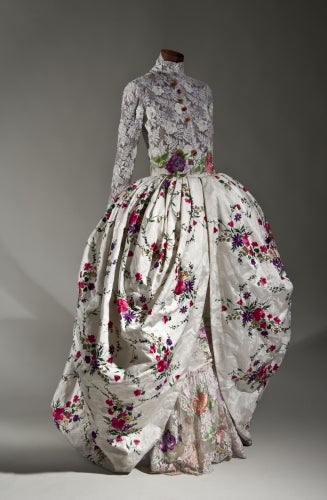
The drama is high in this show. The most striking piece is an Ungaro wedding gown with a lace and sequined bodice and a voluminous skirt embroidered with colorful flowers. A few steps away you can see a more suggestive, black full-length sequined gown by Naeem Khan that skims the curves of the body and artfully and sheerly veils it. The exhibition also includes videos from those who participated in the Fashion Fair, including former show commentator Audrey Smaltz and renowned model Pat Cleveland. There are also video stations were guests can record their memories of the Ebony Fashion Fair.
It must be said, however, that even though dark-skinned models are now regularly included in high-fashion runway shows and advertisements, there is still very little diversity in general and black bodies specifically within the fashion industry. Last year, supermodels Iman and Naomi Campbell and former model agent Bethann Hardison called for the fashion industry to be more inclusive. This show could easily be the first time since the end of the Fashion Fair that anyone has seen so much high-fashion on such diverse bodies. If only the larger fashion industry would take note.
“Inspiring Beauty: 50 Years of Ebony Fashion Fair” will be on display at the Museum of Design Atlanta until January 4, 2015.
Jennifer Jefferson is a journalist based in Atlanta.
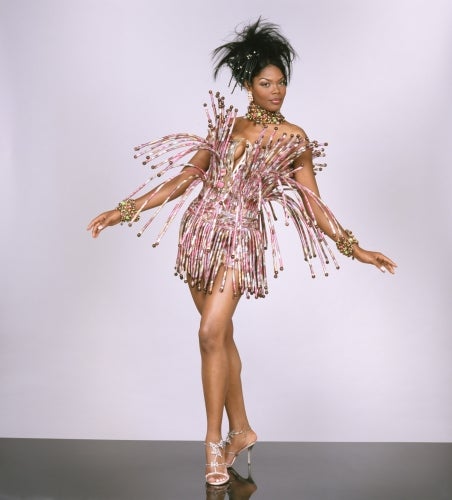
silk chiné taffeta, horn, plastic and glass beads, horsehair tubing, plastic boning.

silk moiré taffeta and satin.

evening dress, fall/winter 1986; wool knit, plastic buttons.
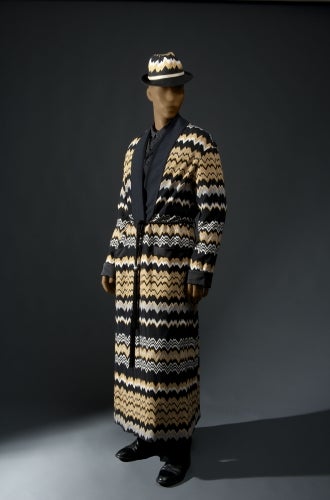
blend chevron knit.
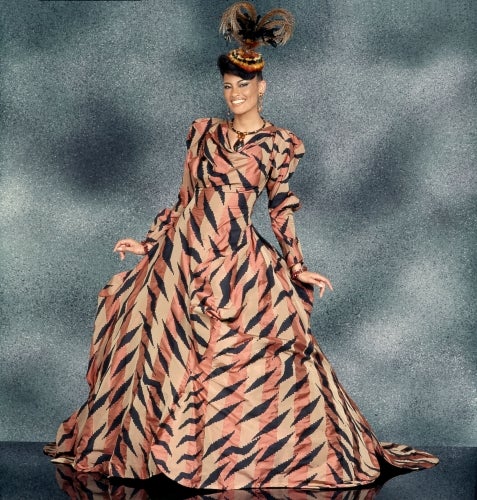
hand-silkscreened print.


